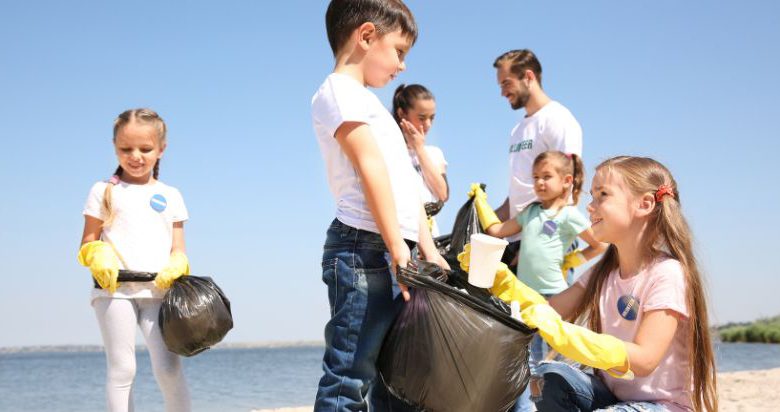Teaching Kids About the Importance of Giving

Teaching Kids About the Importance of Giving
People give gifts for all kinds of reasons: holidays, birthdays, or random Tuesdays. And kids like few things more than a surprise gift just for them. But learning how to give gifts and be generous is a skill that will turn them into well-rounded, thoughtful teenagers and adults.
This article explains how generosity “rewires” the brain, how generosity is best learned, and ways that you can engage your children so generosity becomes a shared family value.
Remember! Children younger than 2 years old don’t have the ability to understand generosity or empathy. Most children don’t fully understand the concept of generosity until they are 4 or 5 years old. So feel free to start introducing the concept to your children at any age, but don’t expect it to “click” until they are in preschool.
The Science of Giving
Any time an activity or action makes us feel something, science is happening. That’s because all of our feelings and emotions are tied back to our brains. There can be very strong emotions connected to giving and receiving gifts, which means there is a “science” to generosity. And the results show that people who give well seem to live well, too.
Good Feelings …
In one study, researchers performed fMRI scans on two groups of people: those asked to spend money on themselves and those asked to spend money on others. They found that people who spent money on others showed increased activation in the parts of the brain associated with generosity and pleasure during a social sharing task. They also reported higher levels of happiness after the experiment was over.
In short, their study reinforces the idea that it really is better to give than receive!
… and Bad Ones, Too
It’s true that many people feel strongly when they give a gift, but it can be strong anxiety and worry instead of excitement and happiness. Can you relate? It can take the fun out of gift giving when the pressure to give a “good” gift or one the recipient loves eclipses everything else.
If you or your child finds it stressful to give gifts, Dr. Scott Rick at the University of Michigan suggests taking a few minutes and reframing how you define a gift. “A good gift involves some sacrifice — money, time, or both,” Rick said. “It shows that you understand and know the person and can surprise them.”
So for you and your kids, don’t let the price, the size, or the complexity of the gift get in the way of finding ways to be generous to those around you.
Ways to Give Back
When it comes to kids, the most obvious way to express generosity is through material gifts (i.e., things that cost money). But instead of defaulting to giving away things your child already owns (and you want out of the house), show and share with them that they can give back in lots of ways, including:
- Generosity through time. Whether your child chooses to help your neighbor rake their lawn or serve meals to people at your local community center, they can make a big difference by giving their time.
- Generosity through talents. Is your child an aspiring artist? Maybe they would like making handmade cards for children at your local hospital. Do they like to play an instrument? Ask a nearby nursing home if they’d like some “local talent” to come by and entertain their residents.
- Generosity through gifts or money. Giving gifts for special events makes the most sense much of the time, but talk with your child about how they would like to be generous with their resources during the rest of the year. Would they like to buy food for a family struggling with food security? What about giving their toys to children in the foster system?
Give Where They Care
We’ve talked about how kids can give, but how do you pick the areas where they can express their generosity?
Easy — let them decide!
“I know that my son has plenty of barely used (or even unopened) toys that I would love to donate to others who will enjoy them. But that does not mean that he feels the same way,” says Dr. Abigail Romirowsky. “And if I force him to give something to others that he would prefer to keep for himself, he will associate giving with a feeling of loss.”
Jill Gordon, director of the Youth Philanthropy Initiative of Indiana, reminds parents, “If you’re not involving kids in that conversation, they feel like it’s being forced on them. It feels like homework.”
And nobody wants generosity to feel like homework.
Do they love animals? Ask them if they would like to give their time, talents, or money to a local shelter or rescue group. Do they hate being cold? See if they would be interested in donating their old winter jackets or helping pass them out through a local charity. Ask your child about the things that they think are important and help connect them with a person or organization that could use their help. The closer to home you can make the issue, the more likely they’ll naturally be excited about giving back.
Show Generosity as a Parent
Setting the example is a common theme in Little Sunshine Playhouse posts, but it’s especially true for the concept of generosity. One of the absolute best ways to set your children up to be generous is by being generous in front of them.
“Parents can model generosity and compassion by showing children that they are kind and generous to others,” says clinical child psychologist and Deakin University professor Jennifer McIntosh.“When it’s time to give gifts, whether it’s for birthdays or Christmas, involve your child as much as you can in the process. This can mean writing a list and discussing what kind of things the friend or family member would like.”
The Center for Parenting Education gives parents some great prompts for how to create “generosity moments” with their children.
- Share how you are generous. Give them a firsthand account of how and why you show generosity.
- Share how others were generous with you. Expressing how it feels to be on the receiving end of generosity shows your child how important it is to give.
- Be generous with your children … and be happy about it! They’ll watch how you react while giving, so make sure they see you smiling and happy to do it. Your actions lay the foundation for how they will act when they give.
- Turn times of giving into teaching opportunities. Maybe you’ve experienced this … a trip to the store to buy a gift for someone else turns into a time for your child to point out fifty things that they want. Be proactive by talking about the reason they are going, the things the person they are being generous toward appreciates, and how good it feels to be thoughtful when it comes to gift giving.
Receiving is something no one needs trained to be “good” at. But giving happily to others and putting thought behind that generosity takes training. As a parent, you may not be a big gift-giver, but that doesn’t mean you aren’t generous. Show your kids all the ways you can give back to those around you and you’ll be teaching them a vital skill they will need for the rest of their lives.





